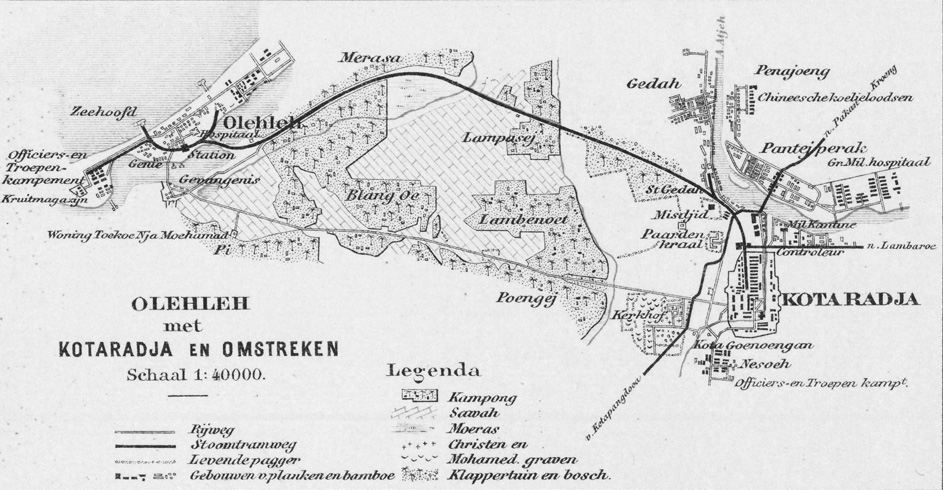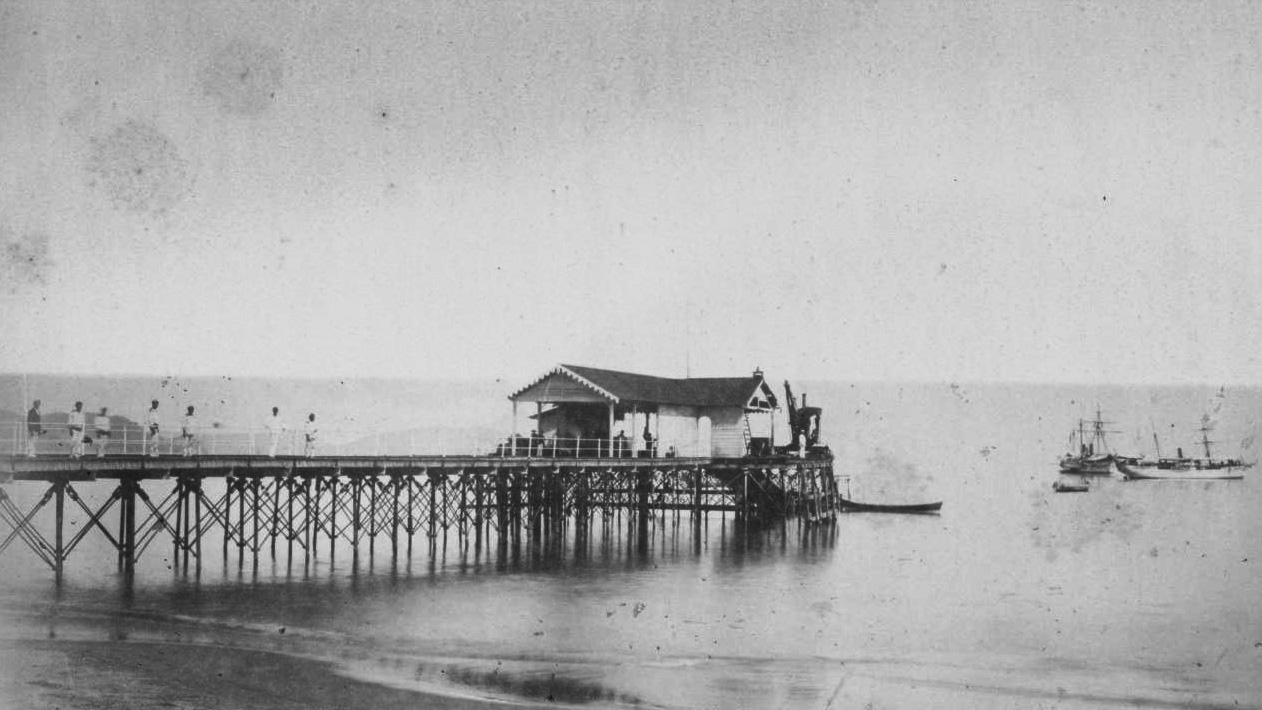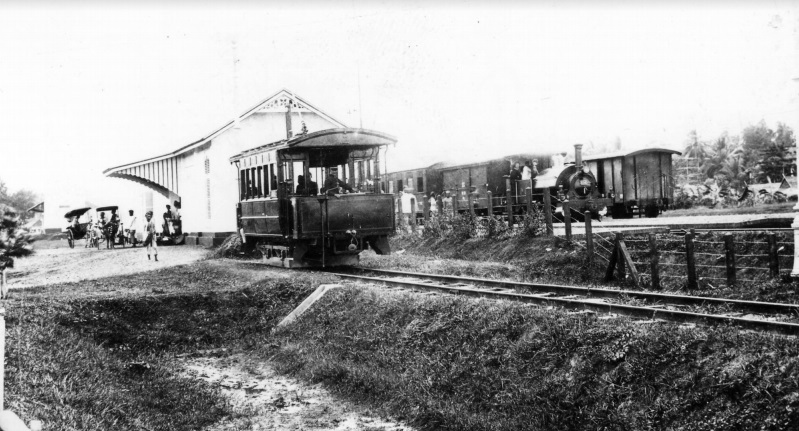
KNIL Atjeh Spoor 1876-1882
Between the coast and Koeta Radja lay a strip of land about 5 km wide,
consisting mostly of swamps and mud. The Atjeh Expeditionary forces were
continually losing artillery which was sinking in the mud of the swamps they
were trying to cross on their way to besiege the capital. On June 26, 1874
Governor General Loudon announced a plan which entailed a 5km railway with a
track gauge of 3' 6". At Oleh Leh a railway jetty would be built into the sea.
The larger vessels would transfer their loads into sailing dhows and scaffolding
on the jetty would be used to transfer the loads to the railway wagons.
The iron required for the scaffolding came from Singapore, the wood for the sleepers from Malacca. The track and rolling stock were ordered in England through the Dutch Consul-General in Singapore. On May 5, 1875, the entire order arrived from England, including two 0-6-0ST locomotives from Fox Walker. A third 0-4-0T locomotive was ordered from Hohenzollern, along with 3 more identical locomotives for Batavia harbour. All 3 Atjeh locomotives were transferred to SS Java around 1884-5.
Due to lack of coolies the line was not completed until September 1876. The track was on a low embankment and ran through flat, marshy terrain, with the jetty and bridges built on piles where necessary. Signals were not present. At the Koeta Radja end the track was laid into the Kraton (Sultan's Palace) which was surrounded by defensive ramparts with lockable gates across the rail entrance.
On the 1 January 1882 a civil administration was introduced in Aceh. The operation of the line was transferred to the Burgerlijke Openbare Werken (BOW), part of the government's civil service. This department was involved in plans for a narrow-gauge tramway system in the local area and also a line to link with Langsa on the east coast opposite Singapore. On the other hand the military also still needed the railway and also required an extension down the eastern coast. In 1884 agreement was reached that the 3' 6" line would be taken up and the trackbed used for the new-born Atjeh Tramway which although operated by the BOW was used extensively by the military on the east coast section until 1916 when it became part of the State Railways.

There is no date on this map and the spellings are not as used in the 1870s. A road has been laid across the marshes and some extra lines have appeared, some of which are part of the local tramway system so I suspect the map dates from the mid to late 1880s. It does however show the full length of the original line from the Kraton to the Jetty, below.

Locomotive data
|
Fox Walker Works numbers 260, 261, 264, 267, 268, 275 & 276 are the only ones between the order and delivery dates with no data on the Works lists.
Below: A Hohenzollern picture showing one of the 0-4-0T locomotives ordered for the Batavia harbour (3) and Atjeh (1) in 1876, and given works numbers 63-66.

This picture of a BETM tram at Tanah Abang c1900 shows a Saddle Tank in the background SS station so it is most likely 114 or 115. There are no records of any other Saddle Tanks on the SS system.
Created 5th January 2016.
Updated
7th August 2017.
You are visitor number
to
this page.